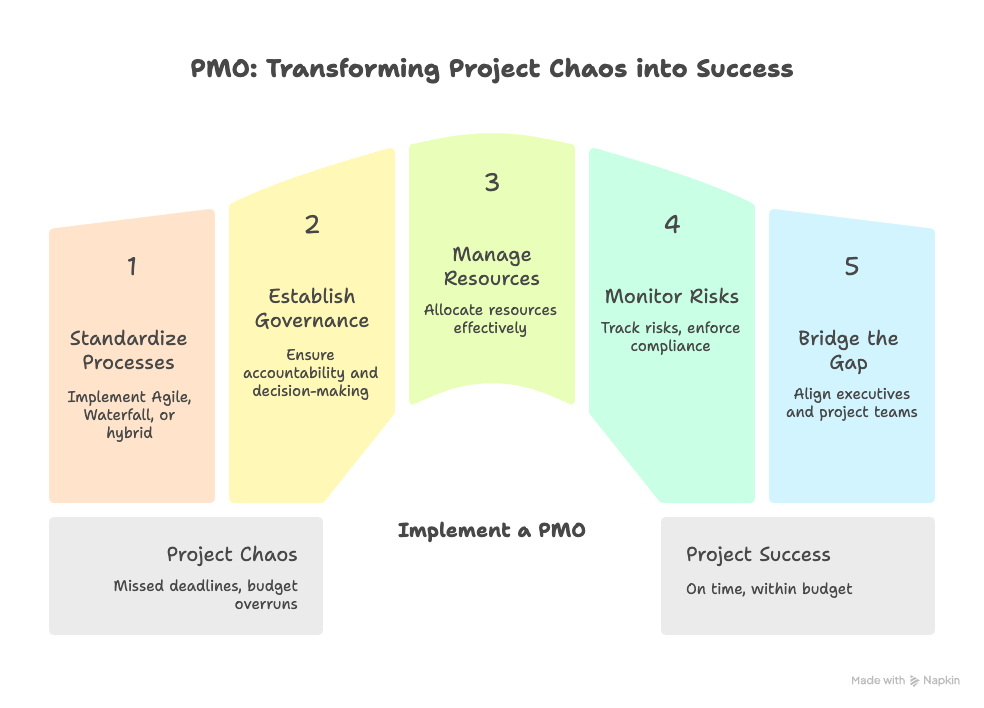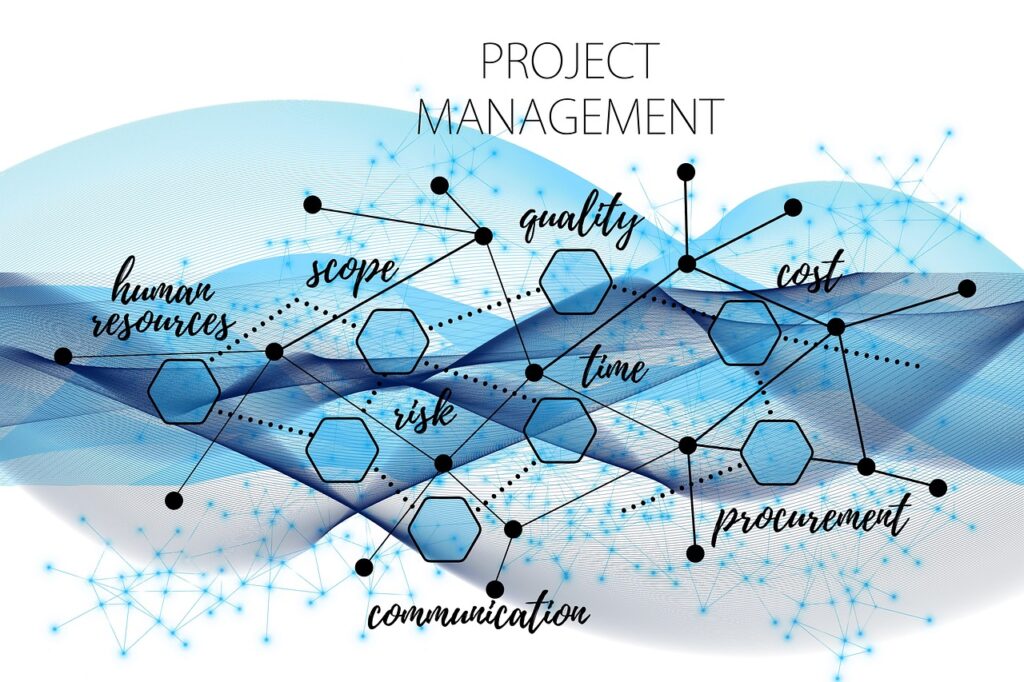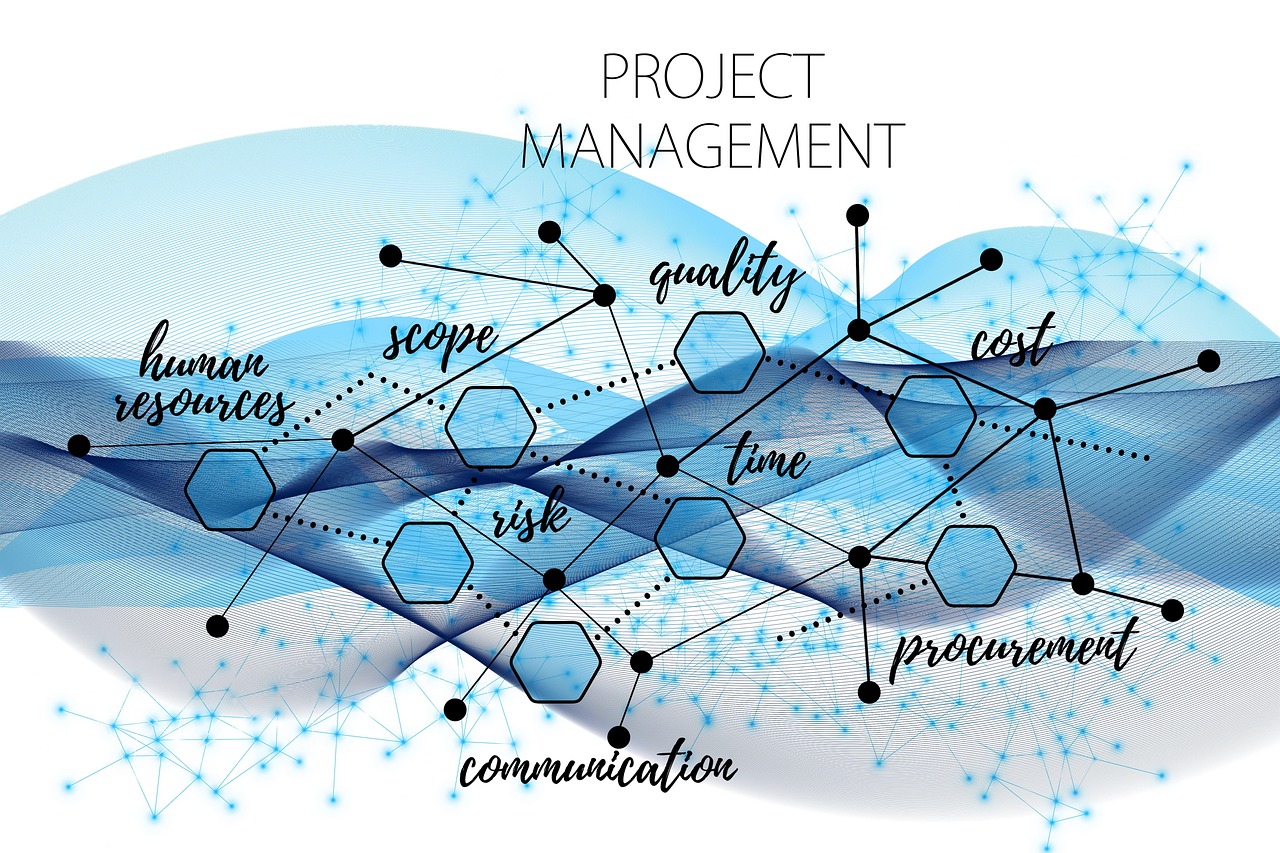A Project Management Office (PMO) is a centralized team that standardizes how projects are delivered, aligns with work strategy, and provides governance, resource planning, and reporting, ensuring initiatives are completed on schedule, within budget, and with a measurable business impact.
In today’s business world, projects don’t just need to be completed; they need to be completed correctly. On time. Within budget. Aligned with strategy. And ideally, without driving your team into chaos along the way. That is what makes PMO important. Yet many organizations misunderstand its purpose, dismissing it as just another layer of bureaucracy. In reality, when structured well, the PMO is a game-changer for efficiency, governance, and long-term business growth.
At Human Computing, we help organizations establish effective project governance frameworks and deploy tools that streamline project management, making it smoother, faster, and smarter. In this article, we’ll break down exactly what a PMO is, what roles and responsibilities it covers, and why it’s so crucial for modern organizations. You’ll walk away with a clear understanding of how the right PMO setup and the right tools can transform your business’s ability to deliver results.
What Is the Function of a Project Management Office?
A Project Management Office aligns projects with organizational strategy, providing governance, resource allocation, and risk oversight. In other words, it’s the central hub that keeps projects working together.
In practice, a PMO:
- Standardizes processes and methodologies – Implements frameworks like Agile, Waterfall, or hybrid approaches to streamline project execution.
- Establish governance frameworks – Ensures accountability and clear decision-making structures.
- Manages resources and budgets – Allocates resources effectively and oversees budgets across multiple projects.
- Monitors risks and compliance – Tracks risks, enforces compliance, and upholds quality standards.
- Bridges the gap – Acts as the bridge between executives and project teams, ensuring alignment on goals.
For example, in a healthcare company, a PMO ensures compliance-heavy projects like HIPAA migrations stay on budget and meet regulatory deadlines, while also aligning with the hospital system’s strategy.

What Are the Roles and Responsibilities of a PMO?
A PMO handles responsibilities that individual project managers may not always be able to cover consistently. These include:
- Define Methodologies & Standards – Provide frameworks and templates.
- Resource Allocation – Manage staffing and budgets across portfolios.
- Performance Tracking – Monitor KPIs and deadlines at the portfolio level.
- Mentorship & Training – Develop project managers into stronger leaders.
- Risk Management – Anticipate and resolve issues before they derail projects.
- Stakeholder Communication – Keep executives, teams, and clients aligned and informed.
For instance, a marketing PMO might oversee multiple campaigns across product lines, ensuring they share resources effectively and don’t compete for the same budget. Human Computing’s PMO dashboards and templates make these responsibilities easy to implement without overwhelming project leaders.
What Is the Difference Between a PMO and a Project Manager?
A common question: Do I need a PMO if I already have project managers? The answer: Yes, because the roles complement each other.
| Role | Scope | Metrics of Success |
| Project Manager | Executes one project at a time | Delivery on time, budget, and scope |
| PMO | Oversees portfolio & governance | Strategic alignment, ROI across projects |
For example, an IT Project Manager might focus on delivering a cloud migration project. The IT PMO ensures that migration fits into the larger digital transformation strategy, balancing resources with other initiatives like cybersecurity upgrades.
What Is the Structure of a Project Management Office?
The structure of a PMO depends on your organization’s size, maturity, and objectives. Here are the three main types:
- Supportive PMO – Offers tools, templates, and training without enforcing processes. Best for smaller organizations or teams seeking guidance.
- Controlling PMO – Establishes standards and ensures compliance while allowing some flexibility. Perfect for organizations balancing structure with autonomy.
- Directive PMO – Holds direct authority over projects and managers. Best for large enterprises managing high-stakes portfolios.
Comparison at a Glance
| Structure | Best For | Authority Level |
| Supportive | Small/new organizations | Advisory only |
| Controlling | Mid-sized, growing orgs | Moderate |
| Directive | Large enterprises | High |
What Types of PMO Exist?
Organizations often define PMOs by their focus:
- Enterprise PMO (EPMO) – Aligns all projects with the company-wide strategy.
- IT PMO – Oversees technology and digital transformation.
- Departmental PMO – Serves one business unit (HR, Marketing, etc.).
- Specialty PMO – Handles compliance, audits, or high-risk projects.
For example, an IT PMO might manage a portfolio of cybersecurity, AI adoption, and data migration projects simultaneously, ensuring they all support the organization’s digital strategy.
What Is the Role of Project Governance in a PMO?
The primary purpose of project governance in a PMO is to establish accountability and alignment with organizational goals.
A PMO provides governance through:
- Clear approval processes.
- Defined roles and responsibilities.
- Risk management protocols.
- Standardized reporting to leadership.
Is a PMO Worth It? (Costs & ROI)
Yes, research consistently shows PMOs deliver measurable ROI:
- Organizations with PMOs see 33% higher project success rates (PMI). (Parsi, 2017)
- They improve stakeholder satisfaction significantly.
While setting up a PMO requires upfront investment, the long-term savings from fewer project failures and better resource allocation far outweigh the costs.
Does Your Business Really Need PMO?
Without a PMO, businesses face:
- Missed deadlines.
- Budget overruns.
- Misaligned projects with poor ROI.
- Burnt-out employees and unhappy stakeholders.
With the right PMO tools and frameworks, you get:
- Consistency across all projects.
- Governance that executives trust.
- Smarter resource allocation.
- Higher project success rates.
A PMO isn’t just a “nice to have.” It’s the backbone of effective project delivery in modern organizations. By clarifying roles, enforcing governance, and aligning projects with strategy, PMOs make sure your projects don’t just finish, they finish with impact.
That’s why Human Computing’s PMO products exist: to give organizations plug-and-play frameworks, dashboards, and templates that transform project chaos into strategy-driven success.
Ready to put structure behind your strategy? Explore Human Computing’s PMO solutions today and start building a smarter, stronger project ecosystem.
References
Parsi, N. (2017). Flying Higher: Project Success Rates Are (Finally) on the Rise—And Are Giving Organizations Room to Grow. PM Network, 31(3), 58–61.







